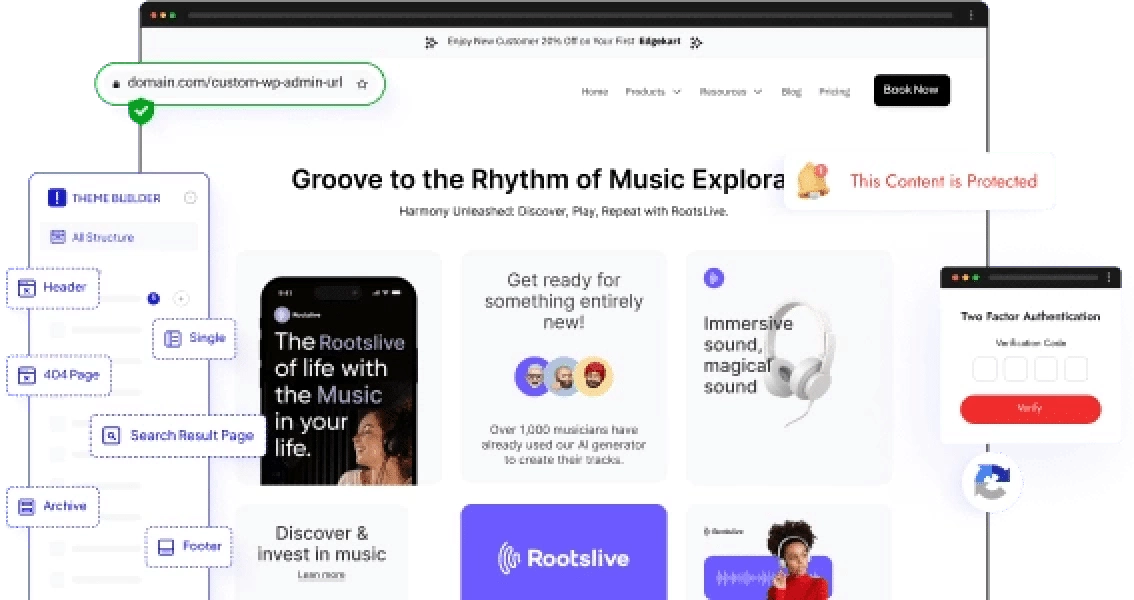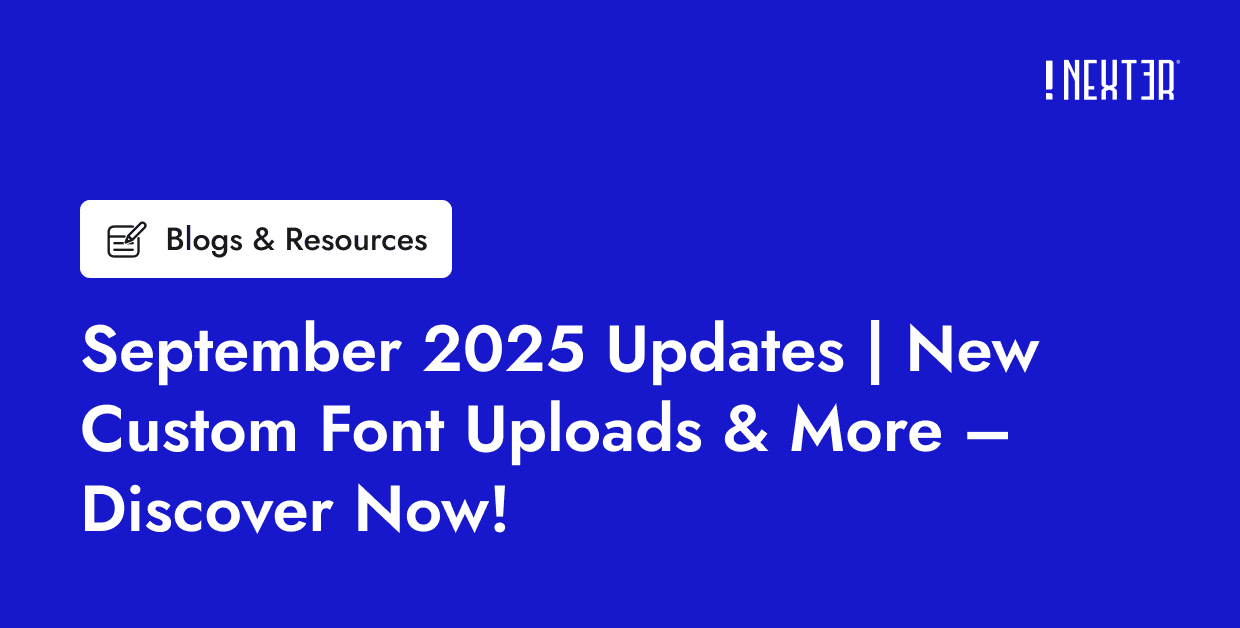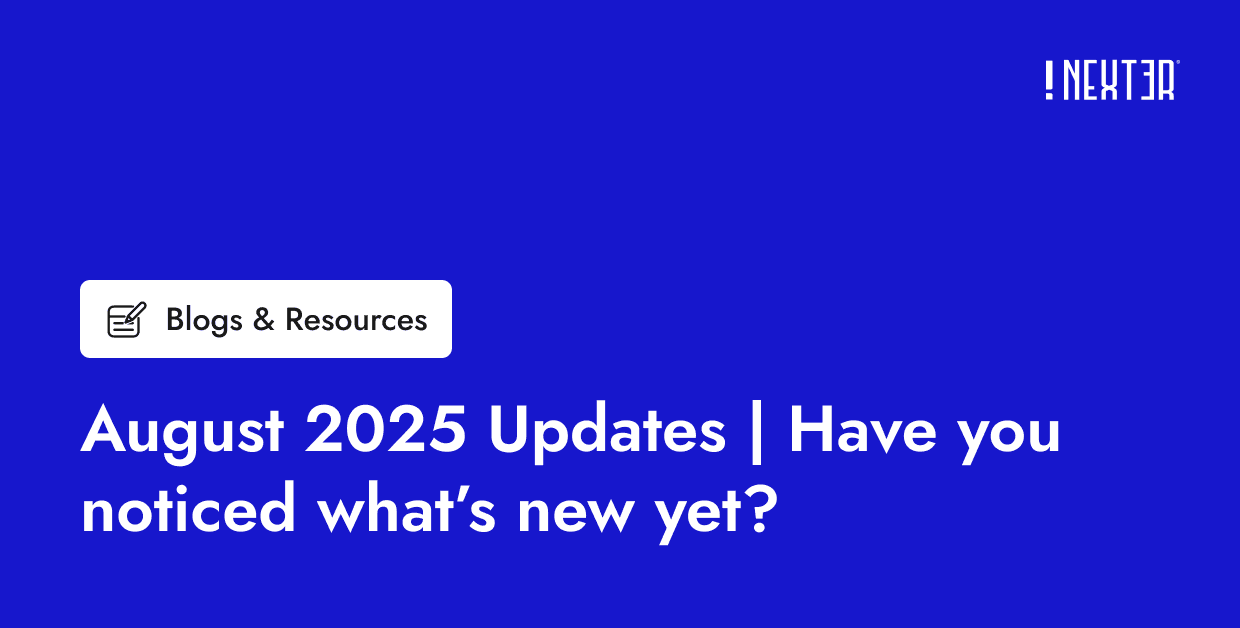Do you wish your WordPress Dashboard was better suited to your needs? Learn how to customize WordPress Admin Dashboard in 5 easy ways.
The WordPress Dashboard is the command center for your WordPress website’s backend. Whether you own a website or manage it for someone else, the WordPress Admin Dashboard can often seem cluttered and disorganized. While it’s certainly functional, it is not tailored to your specific needs and preferences.
Customizing the WordPress Admin Dashboard helps you create a workspace that works for you or your client. It allows you to keep the tools you use regularly within easy reach and reduce the disorganized clutter. This way, you can boost your productivity, improve your workflow, and create a better user experience for you, your team, and your clients.
What is WordPress Admin Dashboard?
The WordPress Admin Dashboard is the first page you see when you log into your WordPress website’s backend. It serves as a control panel that gives you a quick overview of your website and instantly updates you on your website status and activity.
![How to Customize WordPress Admin Dashboard [5 Tips] 5 Custom WordPress Admin Dashboard 1](https://nexterwp.com/wp-content/uploads/2024/10/Custom-WordPress-Admin-Dashboard-1.webp)
When you first log into your WordPress admin dashboard, you’ll see the following elements:
- At a Glance: This section gives you an overview of your site’s content and structure. It includes the total number of published posts, pages, and comments. This helps you keep track of the volume of content on your website without having to visit separate sections.
- Site Health Status: The Site Health Status section presents your website’s performance and security statuses. It displays any issues that need your immediate attention and notifies you if you need to perform updates or optimizations on any element of your website. Keeping an eye on this section helps you notice issues that may affect your site early on.
- Activity: The Activity section showcases the latest activity on your site. This includes a list of the most recent posts and comments. You can quickly see what content has been published recently. This section can be very useful if multiple people contribute to the site, and you need to keep track of the changes made.
- Quick Draft: If you want to quickly write down an idea or draft a new post, you can do it through the quick draft section. This section allows you to create a draft directly from your Dashboard without navigating to the posts section. Quick Draft is not a full-fledged editor, so to add specific elements to your post you will have to visit the WordPress editor.
- WordPress Events and News: This section keeps you informed about the latest WordPress community updates. This allows you to start using the latest features and keep track of changes on WordPress’s constantly evolving platform.
- Side Menu Panel: The side panel menu on the left-hand side of your WordPress dashboard is from where you can navigate to the rest of your website and access all WordPress features. It lets you access posts, media, pages, comments, appearance, plugins, settings, and more. The menu panel is always visible on your Dashboard, and you can visit it from any page.
While the WordPress admin panel offers you several functionalities and easy ways to access different parts of the website, the way it is arranged may not be ideal for all users. The default dashboard interface can get quite cluttered, especially if you have several plugins installed. Similarly, not all users accessing the Dashboard need access to all the features.
Unnecessary widgets and menus in the Dashboard can be distracting, and these extra elements take up space, making it difficult for users to navigate the backend. The default dashboard is also generic and does not match your brand’s identity.
Why Customize WordPress Admin Dashboard?
The standard WordPress Admin Dashboard comes with many features and functionalities. However, to improve your experience when managing your site, you may want to tweak it to match your needs and preferences. Here are some reasons why you should customize your WordPress Dashboard.
1. Better User Experience
When you create a WordPress Custom Admin Dashboard, it is easier for you and other users to navigate through and access frequently used tools. This allows you to save time when working on complex sites with a lot of elements.
2. Enhanced Productivity
Tailoring the Dashboard to highlight essential features reduces distractions and helps you focus on key tasks. This improved the productivity of all your website’s backend users.
3. Personalized Workflows
Different users have different needs. Creating a custom WordPress Dashboard for users’ unique needs allows you to create unique workflows that suit specific roles, such as editors, authors, or developers.
4. Branding Consistency
A custom WordPress Admin Dashboard lets you match your Dashboard with your company’s branding. This way you can create a consistent experience for your team members with your logos and brand colors.
5. Better Client Management
If you manage websites for others, you can customize the WordPress dashboard for your clients to simplify the interface for them. You would be giving them only the tools you need. This reduces confusion and support requests.
Has your WordPress Dashboard been slowing down recently? Here’s How to Fix Slow WordPress Admin Dashboard.
5 Tips to Customize Your WordPress Admin Dashboard
You can customize your WordPress Admin Dashboard to suit your specific needs. Here’s how to customize the WordPress Dashboard in 5 easy ways.
1. Rearrange and Hide Unnecessary Dashboard Widgets
The easiest customization you can perform on your admin dashboard is to add, remove, or rearrange widgets. The WordPress admin dashboard displays several widgets by default, such as “At a Glance,” “Activity,” and “Quick Draft.” Apart from these widgets, certain plugins and features on WordPress may also be displayed as widgets on your Dashboard.
While these widgets can be helpful, they can be overwhelming if you don’t need to see them every time you access the Dashboard. Customizing the widgets can help you declutter your Dashboard.
To hide unnecessary widgets, go to the Screen Options tab at the top right of the Dashboard. From there, you’ll see checkboxes for each widget. Uncheck the ones you don’t need.
![How to Customize WordPress Admin Dashboard [5 Tips] 6 Rearrange and Hide Unnecessary Dashboard Widgets](https://nexterwp.com/wp-content/uploads/2024/10/Rearrange-and-Hide-Unnecessary-Dashboard-Widgets.webp)
To rearrange the widgets, all you need to do is to drag and drop the widgets into your preferred order on the Dashboard. You can move the most-used widgets to the top and push the less important ones further down to create a custom dashboard.
You can also perform similar customizations in other sections of your Dashboard. For example, in the Page section, you can use the Screen Options tab to select which columns you want to display, how many items you want to see on each page, and whether you want to display an extended or a compact view.
2. Add Custom Login Page
The login screen is the first thing you see when accessing the backend of your WordPress website. The default design of the login screen looks like this:
![How to Customize WordPress Admin Dashboard [5 Tips] 7 Default Login Page](https://nexterwp.com/wp-content/uploads/2025/02/Default-Login-Page.webp)
Customizing the login page ensures unified branding across all your platforms and gives your team members a consistent experience when accessing your WordPress dashboard. It also lets you add additional security features to prevent spam on your website.
The easiest way to customize your login page is by using the Nexter Blocks plugin. Once you’ve installed the plugin, navigate to Appearances>Nexter Settings>Extra Options.
Now, find the WP Login White Label feature and enable it. You will see a gear icon appear beside it. Click on it to customize your WordPress Login page.
![How to Customize WordPress Admin Dashboard [5 Tips] 8 Wp Login White Label](https://nexterwp.com/wp-content/uploads/2024/10/Wp-Login-White-Label.webp)
You can use this feature to change fonts, add a logo, change colors, and more.
![How to Customize WordPress Admin Dashboard [5 Tips] 9 Multiple Customization options](https://nexterwp.com/wp-content/uploads/2024/10/Multiple-Customization-options.webp)
Wondering how make your WordPress admin login pages secure? Here’s how to secure your WordPress Login Page.
3. Customize the WordPress Admin Menu
The Side Menu Panel in WordPress gives you access to every part of your site, from posts to plugins. However, the default layout may not suit your specific workflow, especially if you don’t need to access all the options regularly. Customizing the admin menu can make navigation more efficient by focusing on the tools you use most.
To modify the menu, you can use a plugin like Admin Menu Editor. This plugin lets you rearrange menu items, rename them, or even hide items you don’t want to see. After installing the plugin, you would have to navigate to Settings>Menu Editor to make changes to your custom menu items.
![How to Customize WordPress Admin Dashboard [5 Tips] 10 Customize the WordPress Admin Menu](https://nexterwp.com/wp-content/uploads/2024/10/Customize-the-WordPress-Admin-Menu.webp)
You can also customize which parts of the menu different types of users can see. For example, if your website’s contributors only need access to posts and media, you can hide settings, appearance, or other menu items to avoid confusion.
4. Customize What Appears in WordPress Admin Toolbar
The WordPress Admin Toolbar is a handy menu that sits at the top of your screen when you’re logged into your WordPress site. It’s available both in the admin area and the public-facing parts of your website.
This toolbar provides quick access to various site management features like adding new posts, editing pages, or viewing recent comments. It’s handy for site administrators, editors, and other users who need to move quickly between tasks without navigating through multiple menus.
Each new tool often adds its own options to the toolbar, so the admin toolbar can get cluttered with time. To customize the admin toolbar, you can use the Adminimize plugin. After installing and activating the plugin, navigate to Settings>Adminimize.
![How to Customize WordPress Admin Dashboard [5 Tips] 11 Adminimize plugin](https://nexterwp.com/wp-content/uploads/2024/10/Adminimize-plugin.webp)
In the Admin Bar Backend Options and Admin Bar Front End Options, you can choose which items appear in the toolbar. You can also specify different options for each user role, ensuring that only the necessary tools are visible to each type of user.
Once you’ve made your selections, click the Update options button to save your changes.
Is working on your website’s code straining your eyes? Here are the best eye-friendly programming fonts.
5. Change The WordPress Admin Color Scheme
The default WordPress admin color scheme is functional but may not suit everyone’s aesthetic preferences. Changing the color scheme on your custom dashboard can help improve usability especially if you work for long hours on the backend. Bright colors or high-contrast options can reduce eye strain and make the Dashboard more comfortable to use.
To change the color scheme, go to Users > Profile in the WordPress admin panel. You’ll see several preset color schemes that you can choose from. These color schemes apply only to your user account, so if you have multiple users on your site, each person can choose their preferred color scheme.
![How to Customize WordPress Admin Dashboard [5 Tips] 12 Change The WordPress Admin Color Scheme](https://nexterwp.com/wp-content/uploads/2024/10/Change-The-WordPress-Admin-Color-Scheme.webp)
For more advanced customizations, you can use plugins like Admin Color Schemes, which provides additional color options, or you can add custom CSS to create a unique look.
Stay updated with Helpful WordPress Tips, Insider Insights, and Exclusive Updates – Subscribe now to keep up with Everything Happening on WordPress!
Wrapping Up
Customizing your WordPress admin dashboard can transform the way you manage your website. There are many easy ways you can customize the WordPress Admin Dashboard for your clients for your own use. Start by rearranging widgets, customizing the login page, and move on to more specific changes like customizing the menu and tweaking the color scheme. These changes can make your WordPress Dashboard more user-friendly and improve its usability.
By fine-tuning your WordPress admin dashboard, you create an environment that works better for you, your team, or your clients. To take your website to the next level and create an unforgettable experience for all your site’s visitors, use the Nexter Blocks plugin. This comprehensive plugin comes with 90+ Gutenberg blocks that help you enhance the look and feel of your website effortlessly. Improve your website’s functionality and aesthetic appeal with Nexter Blocks’ customizable features.
Try Nexter today and see how it can help you unlock your site’s full potential.
FAQs on Customizing the WordPress Admin Dashboard
Can I customize the WordPress admin panel?
Yes, you can customize the WordPress admin panel to make it more suited to your workflow. You can rearrange menus, hide unnecessary features, and add custom widgets. Many plugins are available to help you do this without coding, which makes it easy to create an admin experience that meets your needs.
Can I add custom widgets to the WordPress admin dashboard?
Yes, you can add custom widgets to your WordPress admin dashboard. Plugins like Dashboard Widgets Suite allow you to insert useful widgets that display additional information, shortcuts, or tools. This customization helps you personalize the Dashboard to fit your specific tasks and make daily management more efficient.
Can I customize the WordPress admin dashboard without coding?
You don’t need any coding knowledge to customize the WordPress admin dashboard. Plugins like Nexter Blocks provide user-friendly tools to customize your WordPress login page and Dashboard to meet your unique working style. These options make it simple to adjust the Dashboard to suit your specific workflow and preferences.
Are there any risks associated with customizing the WordPress admin dashboard?
There can be risks if you over-customize or use plugins that conflict with each other. It’s important to test new plugins or settings in a staging environment before applying them to your live site. Also, always backup your site before making significant changes to avoid losing any important data. Using lightweight optimized plugins like Nexter Blocks can help you avoid issues.
Can I change the color scheme of the WordPress admin dashboard?
Yes, you can easily change the color scheme of the WordPress admin dashboard by going to Users > Profile and selecting one of the preset options. If you want more flexibility, you can use plugins like Admin Color Schemes to access additional color combinations, helping you personalize the look of your admin area.
Can I create a completely custom admin dashboard layout?
Yes, you can design a completely custom layout for your WordPress admin dashboard. You can use the Screen Options tab at the top of your Dashboard to remove widgets from the Dashboard. You can also drag-and-drop widgets to appropriate positions to help you access them easily and control how your Dashboard looks.











